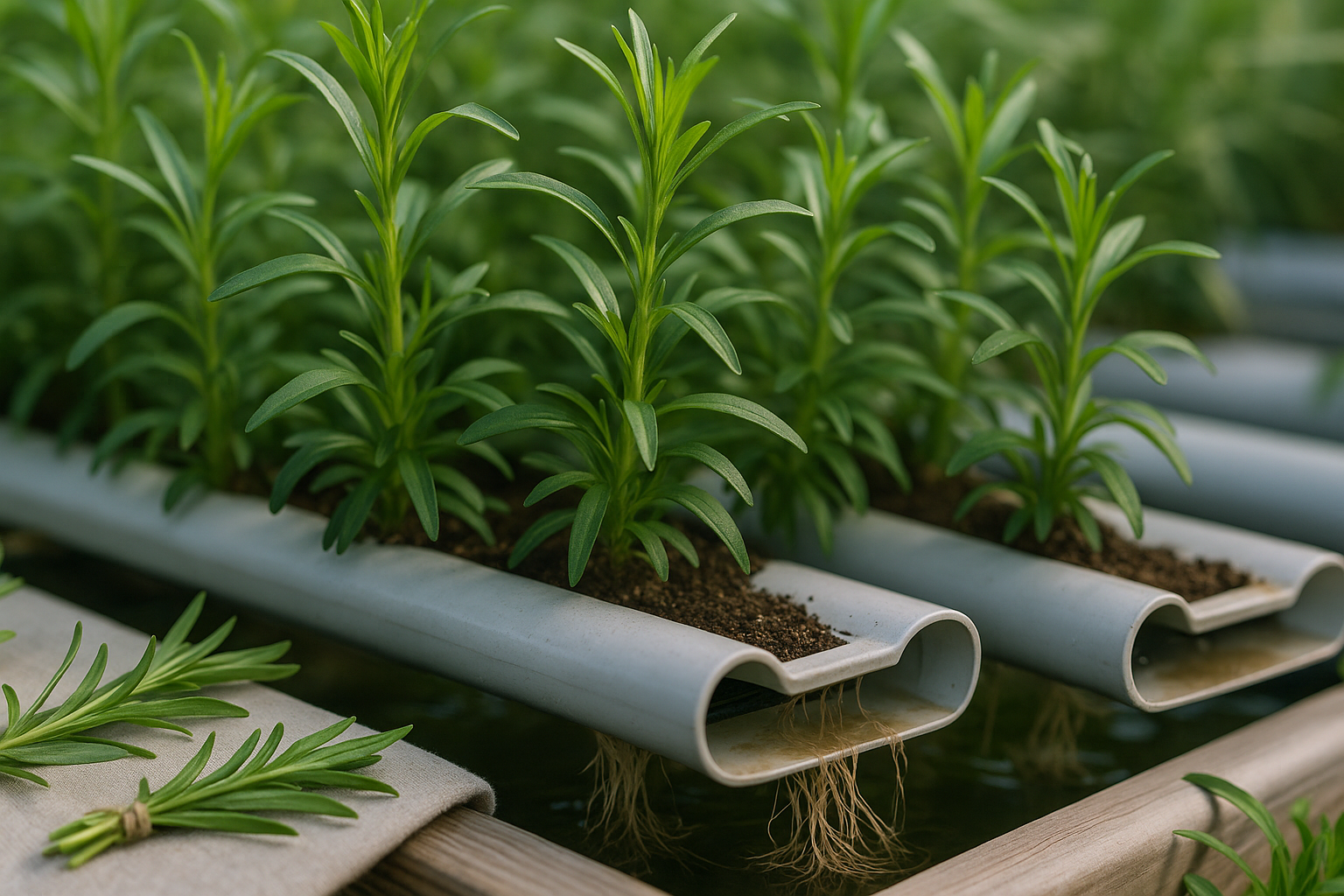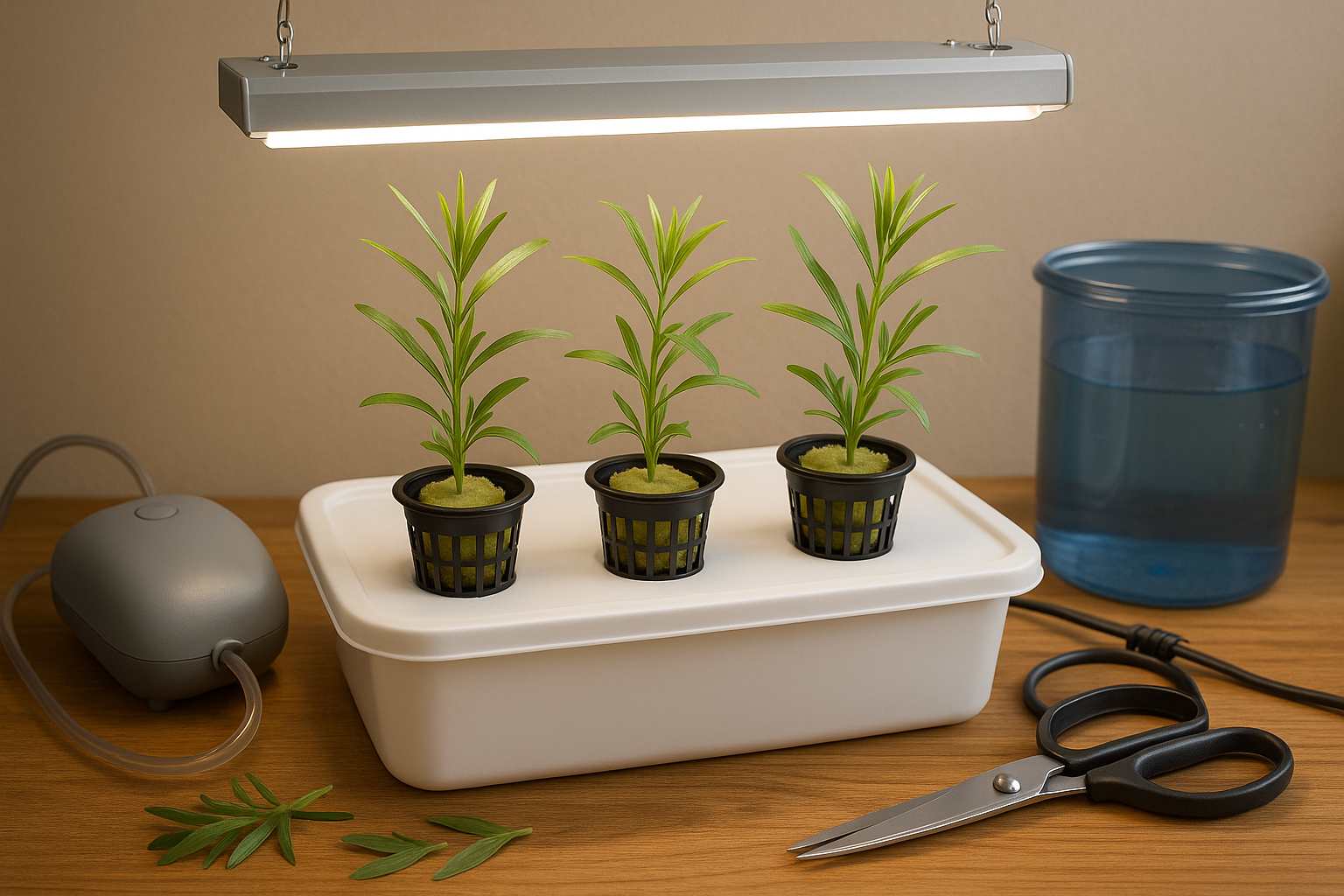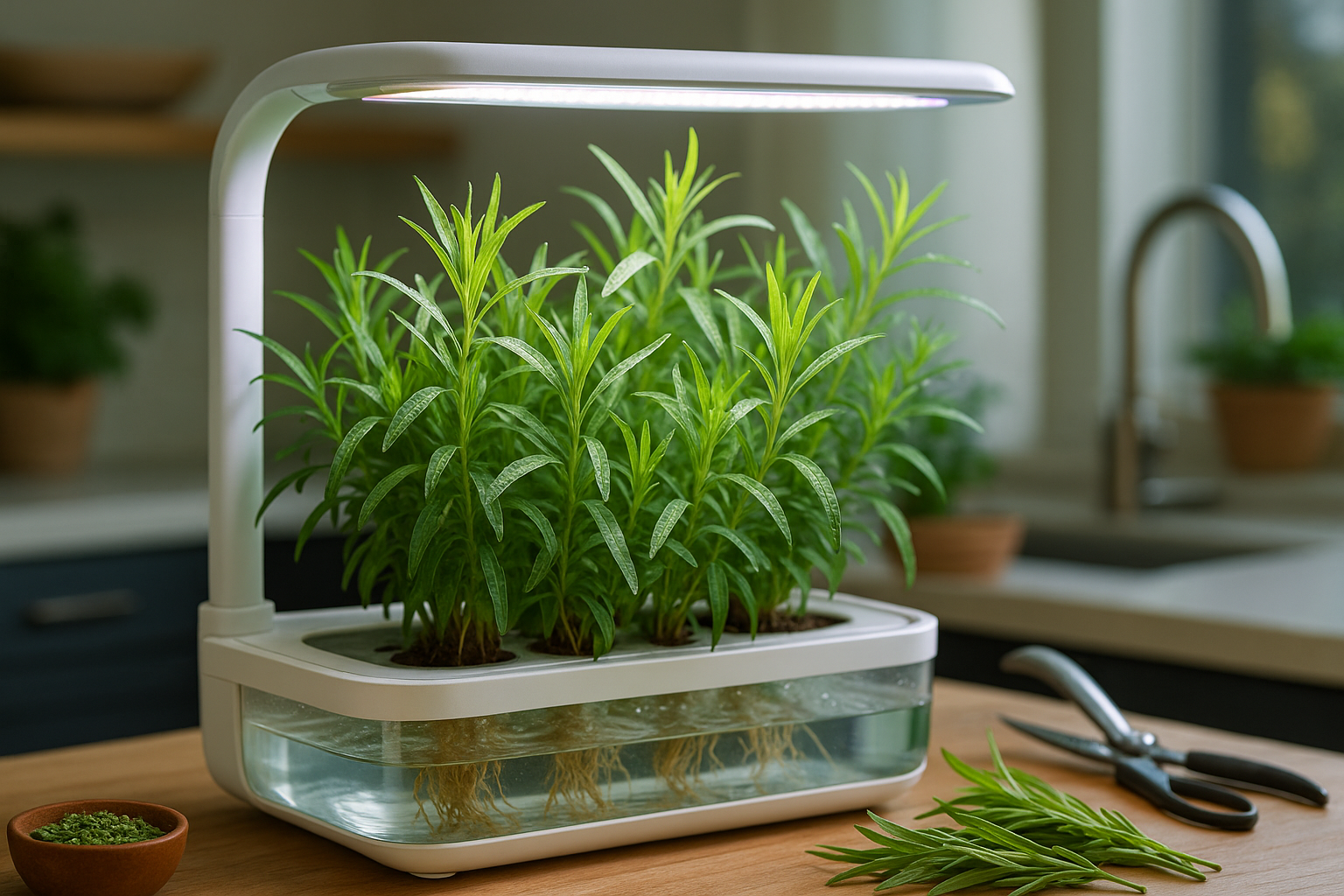Introduction to Hydroponic Tarragon
Hydroponic tarragon is catching the attention of modern gardeners as hydroponic gardening gains popularity in both home kitchens and commercial setups. By eliminating soil and using nutrient-rich water solutions, hydroponic systems offer unique advantages for growing herbs like tarragon.
So, what makes tarragon especially appealing for this method? With its distinctive anise-like flavor, tarragon is a staple in French cuisine but often hard to find fresh at local markets—making it an ideal candidate for homegrown hydroponics.
This raises the big question: is hydroponic tarragon practical and valuable compared to traditional soil cultivation? Many gardeners wonder if the investment and setup are worth the benefits of fresher harvests, greater space savings, and the ability to enjoy a year-round supply of this fragrant herb.
With hydroponic gardening, you don’t have to worry about poor soil quality or pests, and you can often achieve faster growth and more consistent yields. Imagine snipping a handful of vibrant tarragon straight from your kitchen counter, no matter the season.
In this post, we’ll explore whether growing tarragon hydroponically really pays off and what you need to consider before making the switch.
Hydroponic Tarragon 101

French tarragon is a prized herb in the culinary world, known for its slender, aromatic leaves and subtle anise-like flavor. Chefs rely on it to elevate classic dishes like Béarnaise sauce, chicken, fish, and vinaigrettes, thanks to its delicate yet distinctive taste.
While tarragon typically prefers well-drained soil and stable conditions, hydroponics offers a modern twist on traditional cultivation that can actually help this sometimes finicky herb thrive. With hydroponics, you can precisely control water, nutrients, and light, giving tarragon an ideal environment to grow—no matter the climate outside.
Plus, because indoor hydroponic systems are closed and soil-free, you can say goodbye to most pests and diseases, reducing or even eliminating the need for pesticides. This results in cleaner, healthier leaves for your table.
Another major plus is growth rate: hydroponic systems deliver nutrients directly to the roots, often encouraging faster and more consistent yields than outdoor soil gardens. You’re also not limited by seasons, so you can harvest fresh tarragon year-round.
However, French tarragon can be sensitive to excess moisture and root rot, so careful monitoring of humidity and water levels is essential. With a little attention and the right setup, hydroponic tarragon can give you a continuous supply of this gourmet herb—perfect for anyone looking to enhance their cooking with fresh, flavorful ingredients at home.
Setting Up Your Hydroponic Tarragon System

When setting up your hydroponic tarragon system, choosing the right method is key for healthy growth and strong yields. Tarragon thrives in systems like Nutrient Film Technique (NFT), deep water culture (DWC), and vertical hydroponic towers.
NFT is a favorite for smaller herb gardens as it delivers a thin, constant stream of nutrients to the roots, preventing waterlogging while ensuring good oxygenation. Deep water culture, on the other hand, suspends tarragon roots directly in a nutrient-rich, aerated solution, making it an excellent choice for those new to hydroponics due to its simplicity and low maintenance. Tower systems save space and are particularly useful if you want to grow several herbs alongside your tarragon.
To get started, you’ll need:
- A reservoir for nutrient solutions
- An air pump for oxygenation (especially vital in DWC)
- Growing channels or pots
- Net cups to hold your plants
- Grow lights if natural sunlight is lacking
For propagation, tarragon is best started from cuttings rather than seeds, since seedlings often fail to produce true French tarragon and can lack flavor. Take 4–6 inch softwood cuttings from a healthy plant, strip the lower leaves, and place them in rockwool cubes or another inert medium, keeping them moist until roots emerge—a process that usually takes 2–3 weeks with a success rate over 80% in controlled conditions.
Once cuttings have rooted, transplant them into your chosen hydroponic system, and monitor water, nutrients, and light to give your tarragon a robust start.
Nutrient, Light, and Environment Needs
Growing healthy hydroponic tarragon starts with dialing in nutrient and environment settings for optimal growth. Aim for an electrical conductivity (EC) between 1.2 and 1.6 mS/cm, which provides enough nutrients without risking salt buildup. Maintain a pH range from 5.5 to 6.5 to maximize nutrient uptake and prevent deficiencies.
Good quality, complete hydroponic nutrients or an all-purpose leafy greens formula work well for tarragon, but monitor your solution weekly to catch any imbalances early. Tarragon thrives under 14-16 hours of moderate-intensity light per day; full-spectrum LED grow lights are a great choice, positioned 12-18 inches above the plants.
Optimal temperatures range from 18-24°C (65-75°F), with slightly cooler nights improving both vigor and aroma. Humidity should stay between 50% and 60% to discourage fungal problems without stressing the leaves.
Common Challenges
Common challenges include slow seed germination and rooting—French tarragon must be grown from cuttings, as seeds are usually sterile. Take softwood cuttings and use a rooting hormone to encourage strong root development.
Hydroponic tarragon can be sensitive to overwatering and high solution temperatures, which may cause root rot or yellowing leaves. Always ensure good system oxygenation and temperature control, especially during summer months.
If you notice wilting or slowed growth, check your reservoir for oxygenation and reassess environmental conditions quickly. By keeping a close eye on these factors, you’ll set your hydroponic tarragon up for lush and productive growth.
Maintaining, Harvesting, and Troubleshooting
Keeping your plants healthy starts with regular care—prune any yellowing or damaged leaves to boost airflow and prevent disease, and check daily for pests like aphids or mites. For hydroponic or potted setups, ensure your roots stay healthy by avoiding overwatering and providing proper drainage; healthy roots should look white, not brown or mushy.
When it’s harvest time, pick crops early in the morning when they’re most flavorful—herbs should be snipped just before flowering, while fruits and veggies are best picked at peak ripeness for maximum taste and yield. Use sharp, clean scissors or pruners to avoid damaging stems.
Troubleshooting common issues also helps keep your garden thriving:
- Yellowing leaves may signal a nutrient deficiency—try adjusting your fertilizer mix, ensuring your plants get enough nitrogen, phosphorus, and potassium.
- Root rot is usually caused by too much moisture, so double-check your watering schedule and be sure your containers or hydroponic systems drain well.
- If you spot slow growth or wilting, look for clogged pumps or blocked tubing in hydroponic systems; regular equipment maintenance can prevent bigger headaches down the road.
A little attention each day goes a long way in growing healthier, more productive plants!
Should You Grow Tarragon Hydroponically? Pros, Cons, and Use Cases
Growing tarragon hydroponically offers real advantages for both home gardeners and small commercial growers, especially if you’re limited on space or want fresh herbs year-round. Hydroponics lets you place your tarragon setup anywhere — from a sunny kitchen corner to a compact urban balcony — and you can precisely control water, nutrients, and light to maximize flavor and growth.
For home cooks, this means you can snip aromatic tarragon leaves anytime for gourmet recipes, regardless of the season or outdoor conditions. Small commercial growers, particularly those selling to restaurants or specialty markets, benefit from consistently high-quality yields and fewer issues with soil-borne pests and diseases.
However, the initial setup costs for hydroponic systems can be higher compared to buying pots, soil, and seeds. There’s also a learning curve when it comes to balancing nutrients and monitoring grow lights. Maintenance may require more attention than traditional soil gardening, since you’ll need to keep water clean and systems running smoothly.
In terms of results, hydroponic tarragon often grows faster and can be more flavorful, though some argue that soil-grown plants have a more complex taste.
In short, if you have limited space, crave out-of-season harvests, or want to supply high-end kitchens or farmers’ markets, hydroponic tarragon is worth the investment. But if you’re content with occasional herbs and plenty of outdoor space, traditional soil gardening remains the simplest and most affordable option.
Conclusion & Further Resources
Hydroponic tarragon offers a fresh, flavorful twist for home cooks, gardeners with limited space, and anyone interested in sustainable food practices. Since this system eliminates the need for soil and allows for precise control over nutrients and water, it’s perfect for urban dwellers, chefs seeking year-round herbs, or beginners eager to start an indoor garden.
Getting started is easier than ever with accessible hydroponic starter kits from reputable suppliers like AeroGarden or Hydrofarm. For more in-depth guidance, check out resources like Hydroponic Herb Gardening by Howard Resh, or visit online forums such as r/hydroponics on Reddit.
Don’t be afraid to experiment—hydroponics is as much about learning as it is about growing! Share your progress and tips with the community to inspire others on the same journey.
